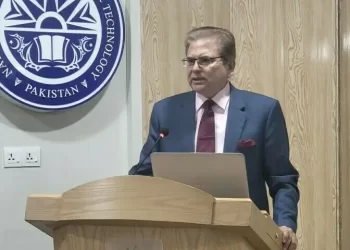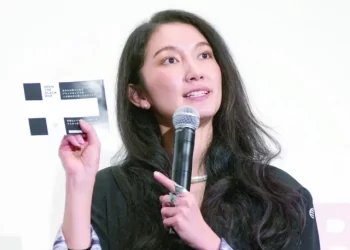- The Supreme Court on Thursday ruled on a case regarding copyright law featuring art by Andy Warhol.
- In her dissent against the 7-2 majority, Justice Kagan accused her colleagues of hypocrisy.
- Kagan said Sotomayor’s ruling, written for the majority, will “thwart the expression of new ideas.”
In her scathing dissent of the Supreme Court’s Thursday ruling against artists in a copyright case featuring a Prince portrait by Andy Warhol, Justice Elena Kagan took aim at her colleagues, accusing them of hypocrisy and stifling creativity, all while quoting the beloved Julie Andrews film “The Sound of Music.”
The Court ruled 7-2 against the Andy Warhol Foundation in the high-profile case, determining that the iconic artist had infringed on Lynn Goldsmith’s copyright of her portrait of Prince by creating an orange silk screen print of the photo. Warhol’s print was later licensed to the media giant Condé Nast for $10,000 and was used on the cover of a magazine, and the print’s commercial use was the basis of the copyright claim.
Warhol Foundation lawyers, and the dissenting justices, Kagan and Chief Justice John Roberts, argued the artist’s interpretation of the photograph altered the original enough to be considered “fair use,” and not subject to copyright claims. The majority, in an opinion written by liberal Justice Sonia Sotomayor, disagreed.
“The use of a copyrighted work may nevertheless be fair if, among other things, the use has a purpose and character that is sufficiently distinct from the original,” Sotomayor wrote in her opinion for the majority. “In this case, however, Goldsmith’s original photograph of Prince, and AWF’s copying use of that photograph in an image licensed to a special edition magazine devoted to Prince, share substantially the same purpose, and the use is of a commercial nature.”
Representatives for the Supreme Court did not immediately respond to Insider’s request for comment.
Supreme Court documents
Kagan, with Roberts concurring, took issue with the majority’s characterization that the Warhol print was not substantially different than Goldsmith’s photograph, pointing to the social commentary ascribed to Warhol’s works and the labor-intensive process of screen printing as defining factors of the work.
“There is precious little evidence in today’s opinion that the majority has actually looked at these images, much less that it has engaged with expert views of their aesthetics and meaning,” Kagan wrote.
Anyone, Kagan said the majority suggested, could have cropped, flattened, traced, and colored the photo as the iconic artist Warhol did. Instead, she argued, Warhol did as artists do, and built upon existing materials to create their own, new works.
“The majority attempts to minimize the visual dissimilarities between Warhol’s silkscreen and Goldsmith’s photograph by rotating the former image and then superimposing it on the latter one,” Kagan wrote. “But the majority is trying too hard: Its manipulated picture in fact reveals the significance of the cropping and facial reorientation that went into Warhol’s image.”
Quoting the 1965 film “The Sound of Music,” Kagan wrote: “‘Nothing comes from nothing,’ the dissent observes, ‘nothing ever could.’ So somewhere in the copyright statute, there must be an ‘escape valve’ to create something good.”
Kagan also pointed to a 2021 ruling, Google LLC v. Oracle America, Inc., where the same group of justices referenced Warhol’s artwork as protected by fair use, only to walk those arguments back in this latest ruling.
“The majority claims not to be embarrassed by this embarrassing fact because the specific reference was to his Soup Cans, rather than his celebrity images,” Kagan wrote. “But drawing a distinction between a ‘commentary on consumerism’ — which is how the majority describes his soup canvases — and a commentary on celebrity culture, i.e., the turning of people into consumption items, is slicing the baloney pretty thin.”
While Sotomayor for the majority argued the ruling was made due to Warhol’s superstar status and his print being used for commercial purposes, Kagan argued its impacts would reach far beyond major names and instead squash innovation over any artists’ fears of running afoul of the law.
“It will stifle creativity of every sort,” Kagan wrote. “It will impede new art and music and literature. It will thwart the expression of new ideas and the attainment of new knowledge. It will make our world poorer.”









